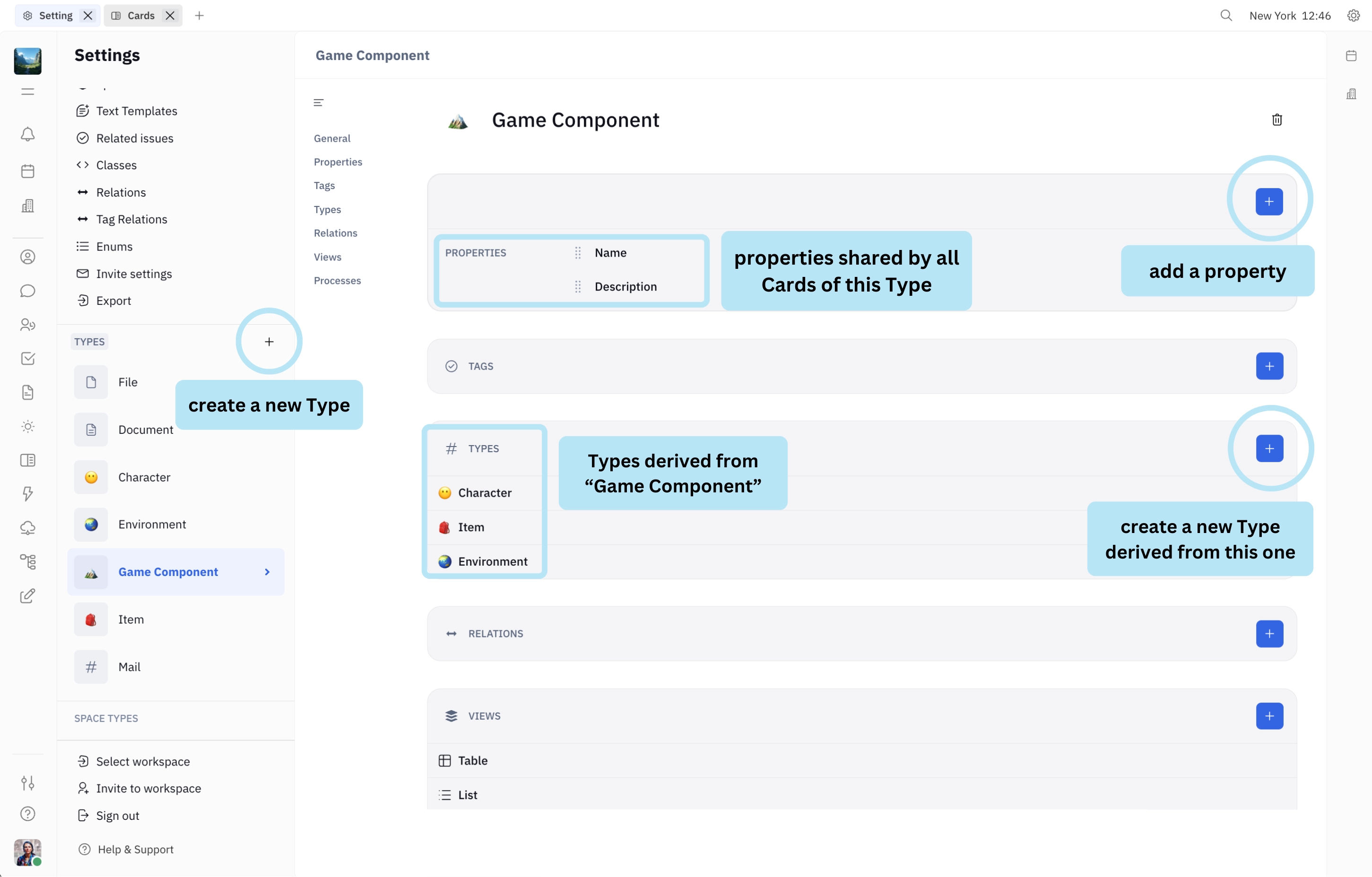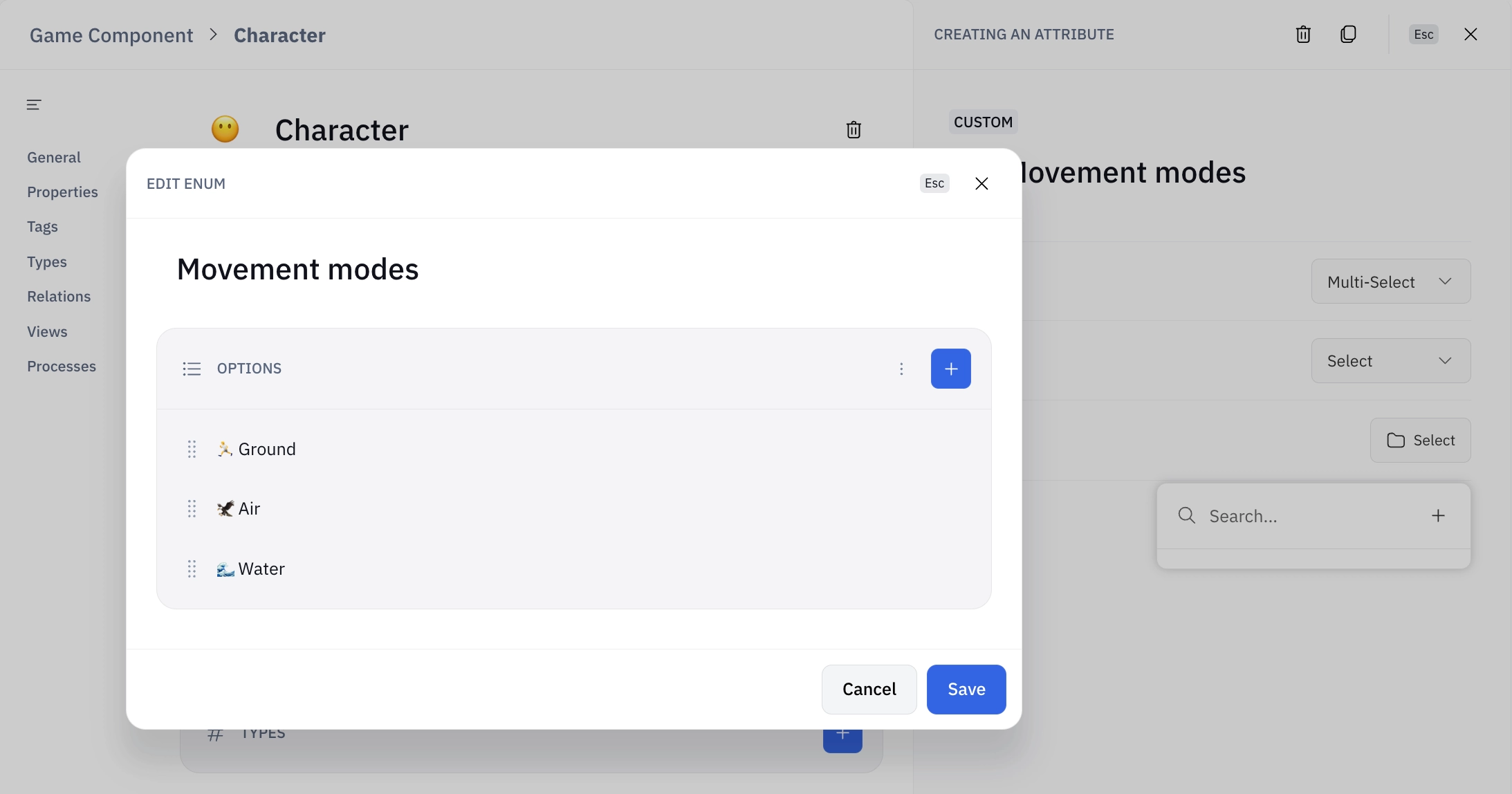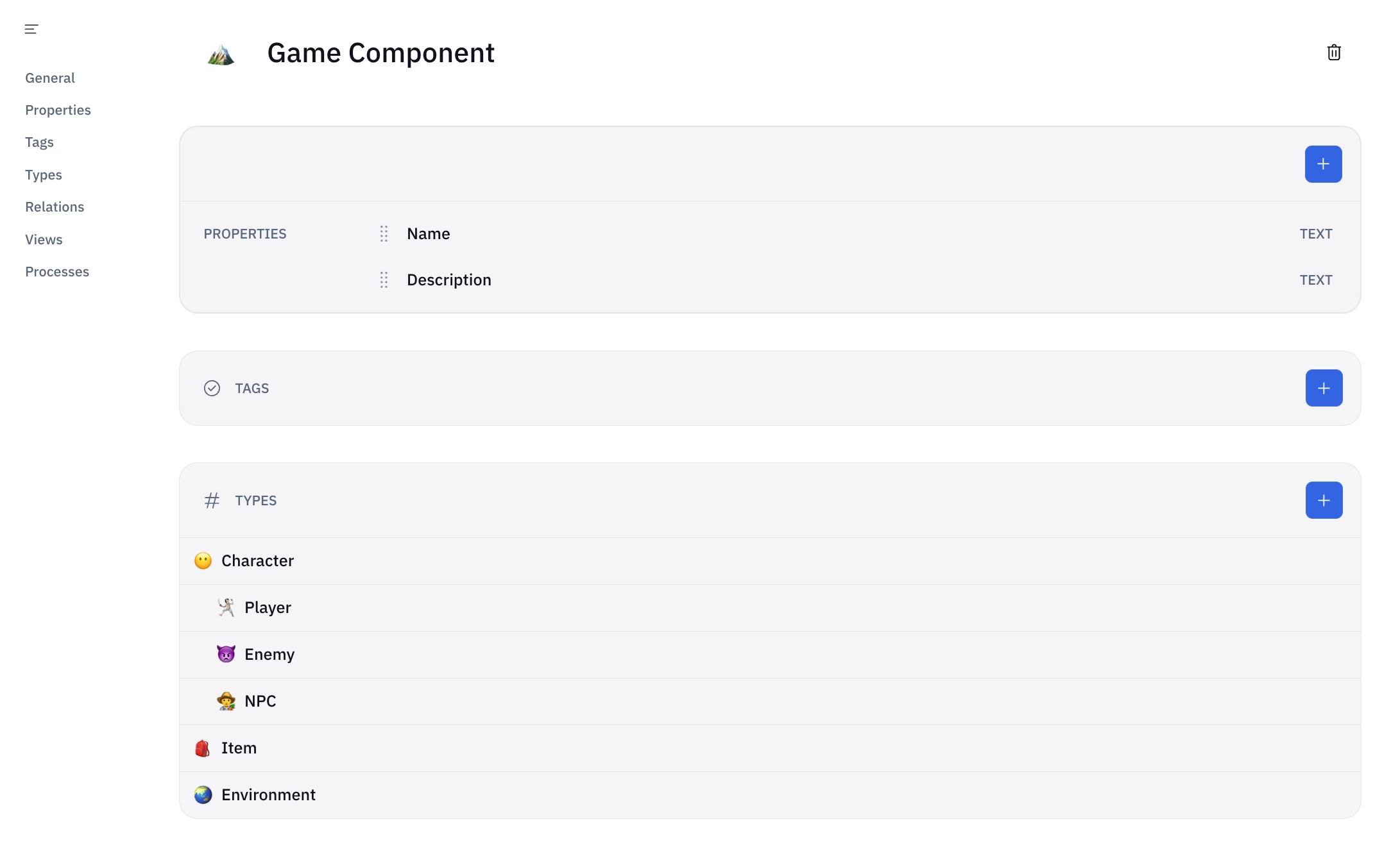Creating Types
To create a Type, navigate to Settings, find TYPES in the left side menu, and click the + button that appears when hovering over the header. Enter a name for your Type and click Create.

Adding properties
Next, add some properties for your Type. Properties are anything that will be shared by all Cards of this Type.
To add a property, click the + button in the properties section. Select from the following:
- URL
- Text
- Checkbox
- Number
- Date
- Reference (link to an Object in your workspace)
- Multi-select (select multiple Objects or dropdown values)
- Select (select one dropdown value)
In our example, we know that all Game Components will have a Name and Description, so we’ll add these on the Game Component Type as Text properties.
Note: Properties can also be added directly to Cards — see Creating Cards.
Creating dropdown menus (enums)
If you chose to add a property of type “Multi-select” or “Select”, you can create a dropdown menu with options. Click the + button to add a new select menu (called an “enum”). Enter a title and options for the menu and click Save. Then, select your menu from the “Select” dropdown to use it for this property.
In our example, we’ve created a Type Character and added a “Multi-select” property Movement modes with a dropdown menu of options: 🏃 Ground, 🦅 Air, and 🌊 Water:

Creating derived Types
We mentioned that the Game Component Type will have a “Name” and “Description” property. But what if we want to create different kinds of Game Components, each with their own unique properties?
Types can be derived from other Types to define variations that have their own unique properties. To create a derived Type, find the TYPES section on the main Type page and click the + button.
From here, the steps for creating a derived Type are the same as creating any other Type. Note that the derived Type will automatically inherit all properties of the Type from which it was derived.
In our example, we can derive several new Types from the Game Component Type, such as Character, Item and Environment, each with their own set of properties.
We can create as many levels of derivation as is needed. In the example below, we’ve derived Types Player, Enemy and NPC from Type Character.

We can define properties on each Type, like this:
Game Component- Name
- Description
😶 Character- Speed (m/s)
- Jump height (m)
- Movement modes (ground, air, water)
- Max health
- Stamina
🤺 Player- Abilities (jump, attack, talk, etc.)
- XP
👿 Enemy- Attack patterns (claw swipe, fireball, charge attack)
🧑 NPC- Affiliation (friendly, neutral, hostile)
- Essential? (yes/no)
- Respawn? (yes/no)
🎒 Item- Item type (weapon, consumable, key item)
- Effect
- Rarity (common, rare, legendary)
🌎 Environment- Size (small, medium, large)
- Interactive? (yes/no)
Deleting a Type
To delete a Type, navigate to the Type page in Settings and click the trash icon in the top right corner. Note that deleting a Type will also delete all Cards of that Type, and this action cannot be undone.